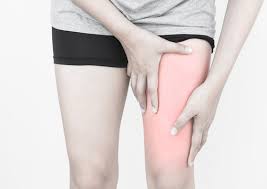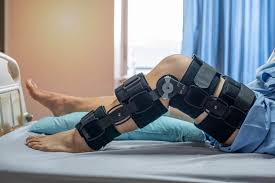How to Recover Fastest Following a Torn Quadricep?

A torn quad or quadriceps tendon rupture is a relatively rare injury and most commonly occurs in athletes over forty years old. When one suffers from a torn quadricep, the tendon that connects the quadriceps muscles to the patella bone in front of the thigh is torn. The job of these muscles, tendons, and bones is to work together to help keep the knee straight. A torn quadriceps tendon is a severe injury that can result in loss of knee function. Walking and other activities may be challenging if a person suffers a small tear. On the other hand, a large tear is disabling and requires surgery to reattach the tendon. After a torn quad, you will also need physical therapy to re-strengthen your muscles and improve function. Therefore, it is essential to follow appropriate treatment to avoid long-term issues.
What Causes a Quadriceps Tendon to Tear
A torn quadriceps can occur when significant force is placed on the leg when the knee is partially bent. For example, when a basketball player jumps and lands awkwardly, the subsequential force after jumping can cause the tendon to tear. While this injury is most common in athletes, in some situations, people suffer a torn quadricep from falling or being involved in a motor vehicle accident.

Symptoms and Diagnosis
Many people report a popping or tearing feeling, followed by pain and swelling when they suffer a torn quadricep. Other symptoms include bruising, tenderness, and an indentation above the knee cap. Many also may be unable to straighten their knee and have difficulty walking due to the knee buckling. Doctors diagnose quadriceps tendon tears by performing a physical exam, usually along with X-rays and MRI scans, to determine the tear’s severity.
Treatment
The recommended treatment option will depend on how severe the tear is. If the tear in the tendon is small, nonsurgical treatment will most likely be attempted first. Nonsurgical treatment typically entails wearing a knee brace and participating in physical therapy to safely re-strengthen the quadriceps muscles. However, if the tear is large and severe, surgery will be necessary to repair the torn tendon and reattach it to the knee cap. The sooner surgery is performed following surgery, the better the results will be. The patient will be placed in a knee immobilizer immediately following surgery to keep the knee straight. Pain medication along with ice is given to the patient as well.
Physical Therapy
The specific rehabilitation program for physical therapy will rely on the type of tear and type of surgical repair a patient undergoes. Usually, after two weeks, a patient can place weight on their leg but will have to wear the brace they were given after surgery to keep the leg locked straight for six weeks. After six weeks, the patient should be able to bend the knee ninety degrees, and progressive re-strengthening and increasing range of motion are begun through physical therapy exercises. Eight weeks after surgery, most patients are permitted to stop wearing the knee brace. However, patients must continue physical therapy as prescribed to recover fully. Full recovery can last anywhere from 10-24 weeks following a torn quad. Every patient’s situation is different, so rehabilitation methods and timelines for recovery will vary from person to person.
Featured Clinician: Anthony Maritato, PT
FEATURED CLINICIAN: Anthony Maritato, PT Anthony Maritato, PT, MSPT, is a licensed physical therapist and co-founder of Total Therapy Solutions, a private practice outpatient physical therapy business that focuses on
Colleen Rapp Wins Friend of Private Practice Award
Long time patient advocate, Colleen Rapp, was awarded the APTA Private Practice Section’s Friend of Private Practice Award during the 2022 PPS conference. Colleen has long been standing up for
Top Tips for Relieving Nerve Pain
Top Tips for Relieving Nerve Pain If you suffer from nerve or neuropathic pain, then you can certainly attest to how it can throw a wrench in your day-to-day routine.
How Your Diet Can Cause Inflammation
How Your Diet Can Cause Inflammation Depending on the situation, inflammation can be a good thing or a bad thing. It is good in that it is your body’s way
What to Avoid After Knee Replacement Surgery
What to Avoid After Knee Replacement Surgery Knee arthroplasty, otherwise known as knee replacement surgery, is designed to relieve pain and restore function in severely diseased knee joints. No matter
How Physical Therapy Can Help You Avoid Reliance on Pain Medications
How Physical Therapy Can Help You Avoid Reliance on Pain Medications If you suffer from chronic pain, you know how managing pain can be a real challenge. Another day, another
Kyle Yancey
Latest posts by Kyle Yancey (see all)
- Top Tips for Relieving Nerve Pain - October 28, 2022
- How Your Diet Can Cause Inflammation - October 25, 2022
- What to Avoid After Knee Replacement Surgery - October 19, 2022
- How Physical Therapy Can Help You Avoid Reliance on Pain Medications - October 13, 2022
- Physical Therapy for Heart Disease - October 11, 2022
